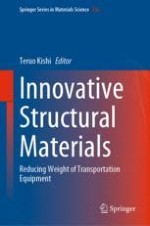2023 | OriginalPaper | Buchkapitel
4. Welding and Joining
verfasst von : Yoshinori Hirata, Hidetoshi Fujii, Chiaki Sato, Hisashi Serizawa
Erschienen in: Innovative Structural Materials
Verlag: Springer Nature Singapore
Aktivieren Sie unsere intelligente Suche, um passende Fachinhalte oder Patente zu finden.
Wählen Sie Textabschnitte aus um mit Künstlicher Intelligenz passenden Patente zu finden. powered by
Markieren Sie Textabschnitte, um KI-gestützt weitere passende Inhalte zu finden. powered by
